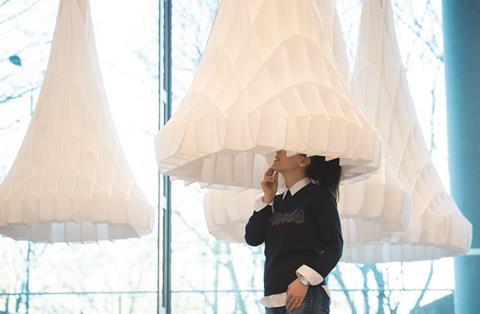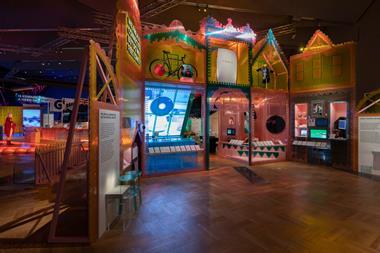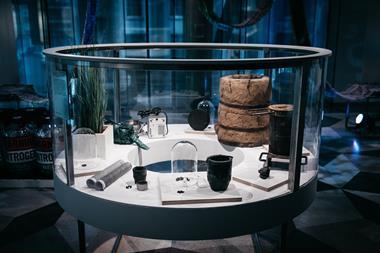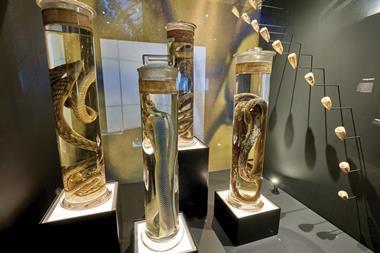This year’s exhibition at the Francis Crick Insitute mixes art and science

Exhibition
The Francis Crick Institute, London, UK
Open until December 2018
Entry free | Details online
The patterns found in nature have fascinated both scientists and artists throughout history. We can all see and appreciate spots on a leopard or the spirals of seashells. But the Crick’s latest exhibition focuses on the lesser-known microscopic patterns encountered by molecular biologists.
Deconstructing patterns follows last year’s Open for discovery exhibition and the format is similar, showcasing some of the research that happens at the Crick and giving a voice to the people behind it. But this time the institute has teamed up with artists and other organisations to bring visitors a more ambitious offering.
The general setup is similar to last time, with attractive displays and opportunities to hear from Crick scientists through headphones. An early bit of interactivity offers the opportunity to contemplate the patterns on your own fingertip at 2× and 10× magnification, and view human skin under a microscope at 120×.
The content is more scientifically challenging than the usual ‘outreach’ material. I wouldn’t bring along young kids, who expect the bright colours and excitement of the Science Museum. But the level is about right for budding students or sci-curious teenagers. There is a fair amount of technical language, but each display comes with a handy glossary in case the jargon gets too much.
The exhibition focuses on the work of research groups who in some way study patterns. In DNA sequencing research, for example, computational techniques used to search for patterns in vast datasets and whole genomes make the lab ‘like a modern day Bletchley Park’. Other researchers use cutting-edge microscopy and other visualisation methods to shed light on the patterns of protein signalling and gene expression during the development of Drosophila fruit flies and C. elegans worms. Understanding how different processes – such as the development of the visual cortex – are coordinated can give the researchers insights into how various human diseases develop.
There’s the chance to nerd out on some stunning fluorescent microscopy – I never knew fruit fly brains could be so beautiful. My only complaint was that more could have been made of this. I’d have liked to see a few enlarged shots, or the opportunity to interact with the best images using a touch screen.
The exhibition also involves work by artists who have collaborated with the scientists to produce bespoke pieces inspired by the research. I suspect the inclusion of these will provoke a marmite reaction in most people. For me, the audio installations were a highlight simply because of their unusual presentation – white, cone-shaped speakers you could stand within to listen to a DNA-inspired poem by Sarah Howe or a soundscape by sound artist Chu-Li Shewring that features interviews from the researchers. Others – such as a short film from the group KaleiKo – were less to my taste and I struggled to see the relevance. When you first step into the exhibition, there is a temptation to head straight for the most ostentatious artworks, but I’d recommend going through the science displays first, which in some cases help explain the art.
The experience was enjoyable overall, and I certainly learned a lot. If you’re in the area and find yourself with an hour or two to spare – perhaps a victim to inevitable train delays at nearby King’s Cross or St Pancras – it’s well worth a visit.

















No comments yet